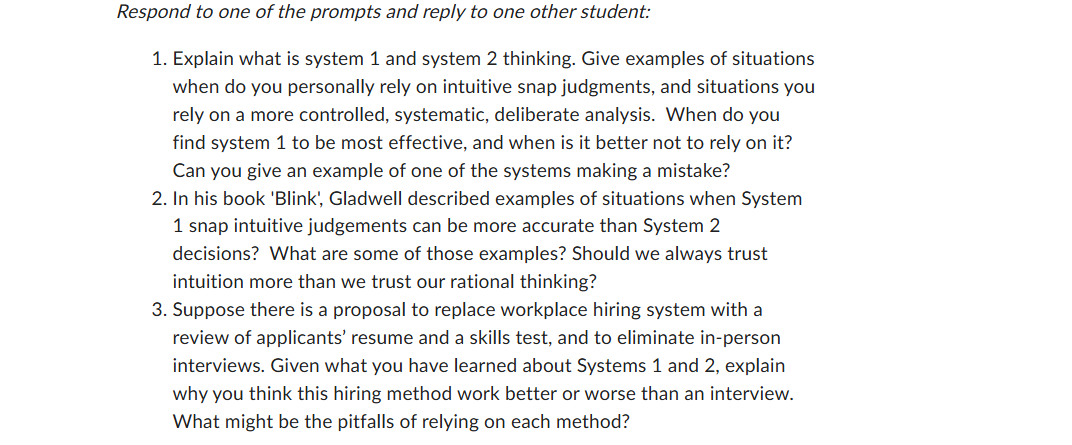ECON-3010 D1 Thinking fast and slow
Respond to one of the prompts and reply to one other student:
- Explain what is system 1 and system 2 thinking. Give examples of situations when do you personally rely on intuitive snap judgments, and situations you rely on a more controlled, systematic, deliberate analysis. When do you find system 1 to be most effective, and when is it better not to rely on it? Can you give an example of one of the systems making a mistake?
- In his book ‘Blink’, Gladwell described examples of situations when System 1 snap intuitive judgements can be more accurate than System 2 decisions? What are some of those examples? Should we always trust intuition more than we trust our rational thinking?
- Suppose there is a proposal to replace workplace hiring system with a review of applicants’ resume and a skills test, and to eliminate in-person interviews. Given what you have learned about Systems 1 and 2, explain why you think this hiring method work better or worse than an interview. What might be the pitfalls of relying on each method?
SOLUTION
System 1 and 2 thinking is a concept which refers to two different modes of thinking. System 1 is typically the first to activate when processing a thought or decision. These thoughts often manifest effortlessly, autonomously, and, in some senses, may seem to come about unconsciously. This system can be highly efficient for routine and day-to-day tasks such as recognizing a familiar face in a crowded area, avoiding a sudden threat, catching a ball, or immediately associating someone’s uniform with their occupation. System 2, on the other hand, refers to a much more logical approach and………..Purchase the full solution for $5
(Solution) ECON-3010 D2 Home Economicus

